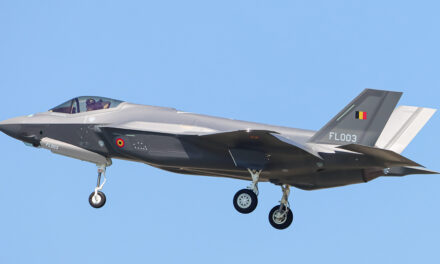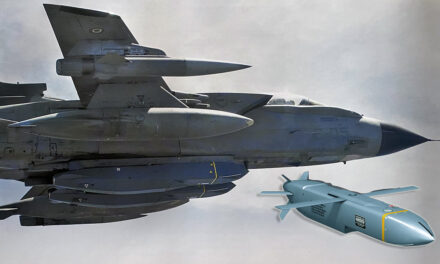The downing of Francis Gary Powers’ U-2
Built in complete secrecy by Kelly Johnson and the Lockheed Skunk Works, the original U-2A first flew in August 1955. Early flights over the Soviet Union in the late 1950s provided the president and other US decision makers with key intelligence on Soviet military capability.
Much has been published about some of the overflights in question, especially the one on May 1, 1960 that ended with the downing of US pilot Francis Gary Powers. However, what kind of experiences the Soviets went through while not only trying to detect and track, but also intercept and shoot down Powers’ high-flying spy-aircraft remains largely unknown.
As explained by Krzysztof Dabrowski in his book Hunt for the U-2, after Powers’ spy plane entered the engagement zone of the SAMs protecting Sverdlovsk, the first to open fire was one of four missile battalions responsible for the defence of the city and assigned to the 4th Independent Army of the V-PVO: the unit under the command of Captain Nikolai Sheludko. The U-2 literally skimmed its engagement zone, but nevertheless Sheludko ordered a missile salvo to be launched.
More missiles

Unsurprisingly, the ‘spy aircraft’ was already out of range by the time the missiles reached its altitude, resulting in their self-destruction. Meanwhile the U-2 entered the engagement zone of the next SAM-site, commanded by Major Mikhail Voronov. At 08:36 this unit fired its first surface-to-air missile. Initially, only one of the brand-new V-750VN (13D) missiles with improved range and maximum engagement altitude was launched, because a safety lock prevented the launching of the usual salvo.
Nevertheless, more missiles followed shortly after. Immediately afterwards, Voronov’s operators reported that the target on their screen began to ‘blink’: this either meant it was hit and disintegrating – or employing electronic countermeasures. In fact, the first missile had detonated behind Powers’ U-2, and its blast and fragments had already caused crippling damage. As a result, the US aircraft was falling from the sky and breaking apart in the process.
Locked inside their command post, Voronov and his subordinates could not see the drama developing above them, as Powers struggled to get out of his cockpit: all they had was the ‘radar picture’ on the screens in front of them – which was open to interpretation. Indeed, because they could not take it for granted that the U-2 had actually been shot down, Voronov ordered additional missiles to be launched and initially did not report the destruction of the target.
Soviet MiG-19 pilot shot down and killed by Soviet SAMs

Because there was no report citing the destruction of the foreign aircraft (Voronov and his crew were not aware of being successful for some 30 minutes afterwards), the seemingly logical conclusion for most of the involved Soviets was that it still had to be shot down. By now, two MiG-19s were airborne and approaching the engagement zone: the aircraft were flown by Captain Boris Aivazian and Senior Lieutenant Sergey Safronov. Earlier experiences had clearly demonstrated that the MiGs were unable to catch a U-2. One could always hope for a lucky opportunity: if nothing else, US aircraft could have lost some altitude due to a malfunction or other reason.
Once airborne, Aivazian and Safronov were guided by ground control: both pilots then sighted debris falling from sky and reported this. These were the remains of the downed U-2. Unfortunately, nobody on the ground realised this at this point in time. Therefore, when `unidentified aircraft’ entered the engagement zone of the next SAM-battalion, its commander – Major Shugayev – ordered his subordinates to open fire. Once again, the V-750s proved their deadly effectiveness. Tragically, this time against a friendly aircraft.
All of a sudden, an explosion enveloped the MiG-19 flown by Senior Lieutenant Safronov. The pilot ejected but was mortally wounded and probably died under the parachute reaching the ground. His lifeless body was found by locals near the village Degtyarka, west of Sverdlovsk. Captain Aivazian had more luck: he promptly dove, thus avoiding further missiles streaking in his direction.
Soviet MiG-19 pilot shot down and killed by Soviet SAMs: an embarrassing case of fratricide

A subsequent analysis revealed that – other than Major Voronov’s hesitations – the main reason for this incident was poor coordination between various air defence assets. Moreover, the Soviets concluded that the IFF-transponders on their MiGs either did not work or transmitting the wrong code. Because of this, the interceptors showed on the radar screens of Major Shugayev’s unit as ‘unidentified’ instead of ‘friendly’.
This finding was contested by Captain Aivazian, who stated that an IFF check was performed before take-off. In an attempt to reconcile these contradictory claims it was also reported that IFF codes of the fighters were not changed as they should have been from the ones used in April to those valid in May. Regardless of how the problem came about and who was to blame, one thing stood clear: the dramatic demise of the MiG was a spectacular and embarrassing case of fratricide. For this reason, Senior Lieutenant Safronov’s death was kept secret for many years.
Hunt for the U-2 is published by Helion & Company and is available to order here.

Top image: From the Powers Family Collection
Photo credit: U.S. Air Force






